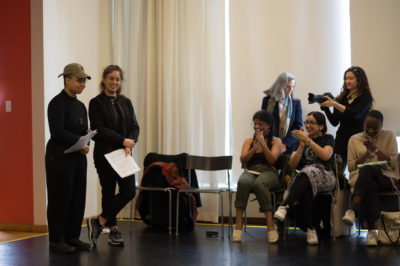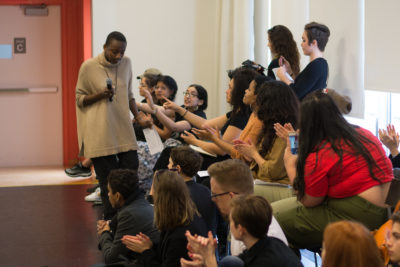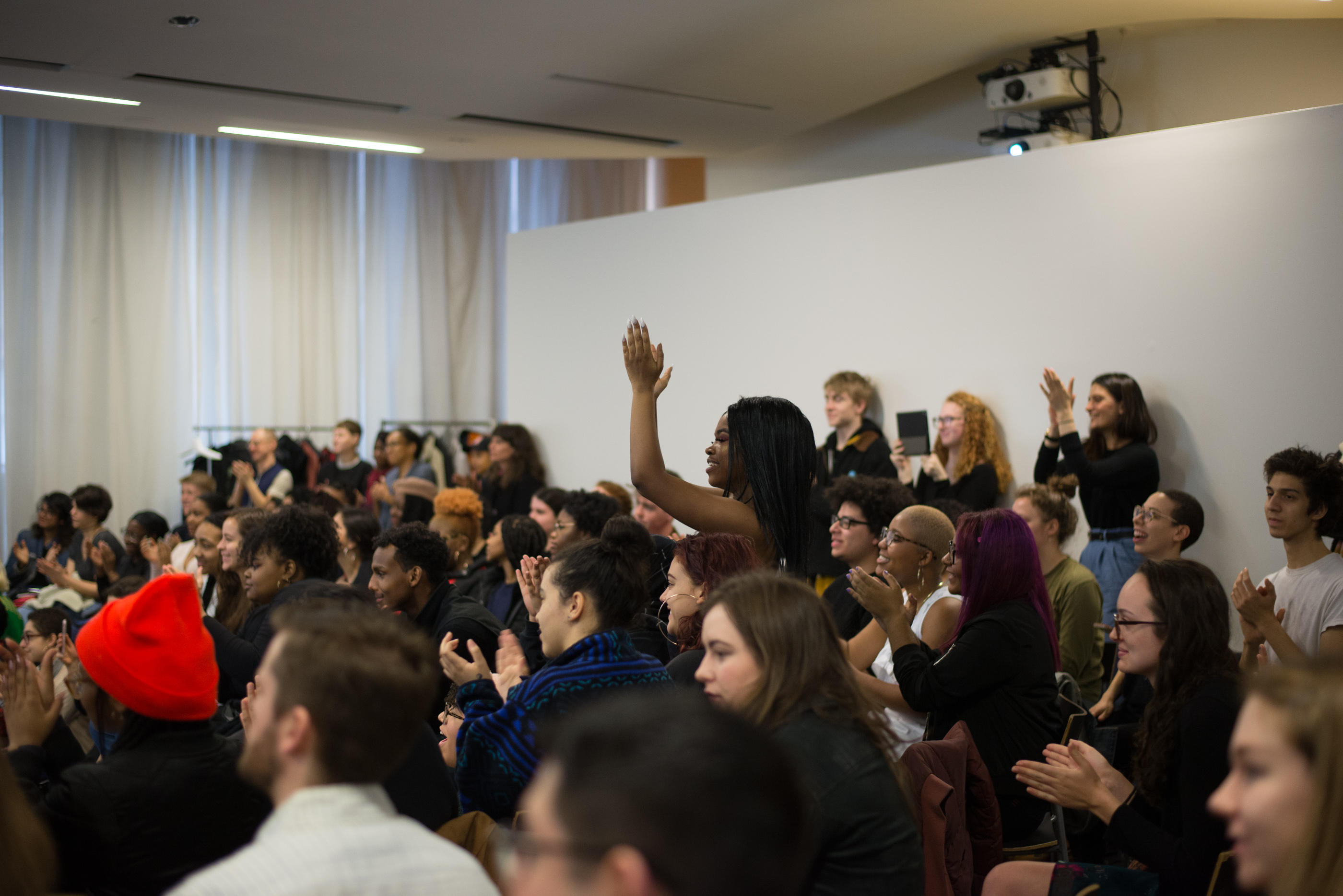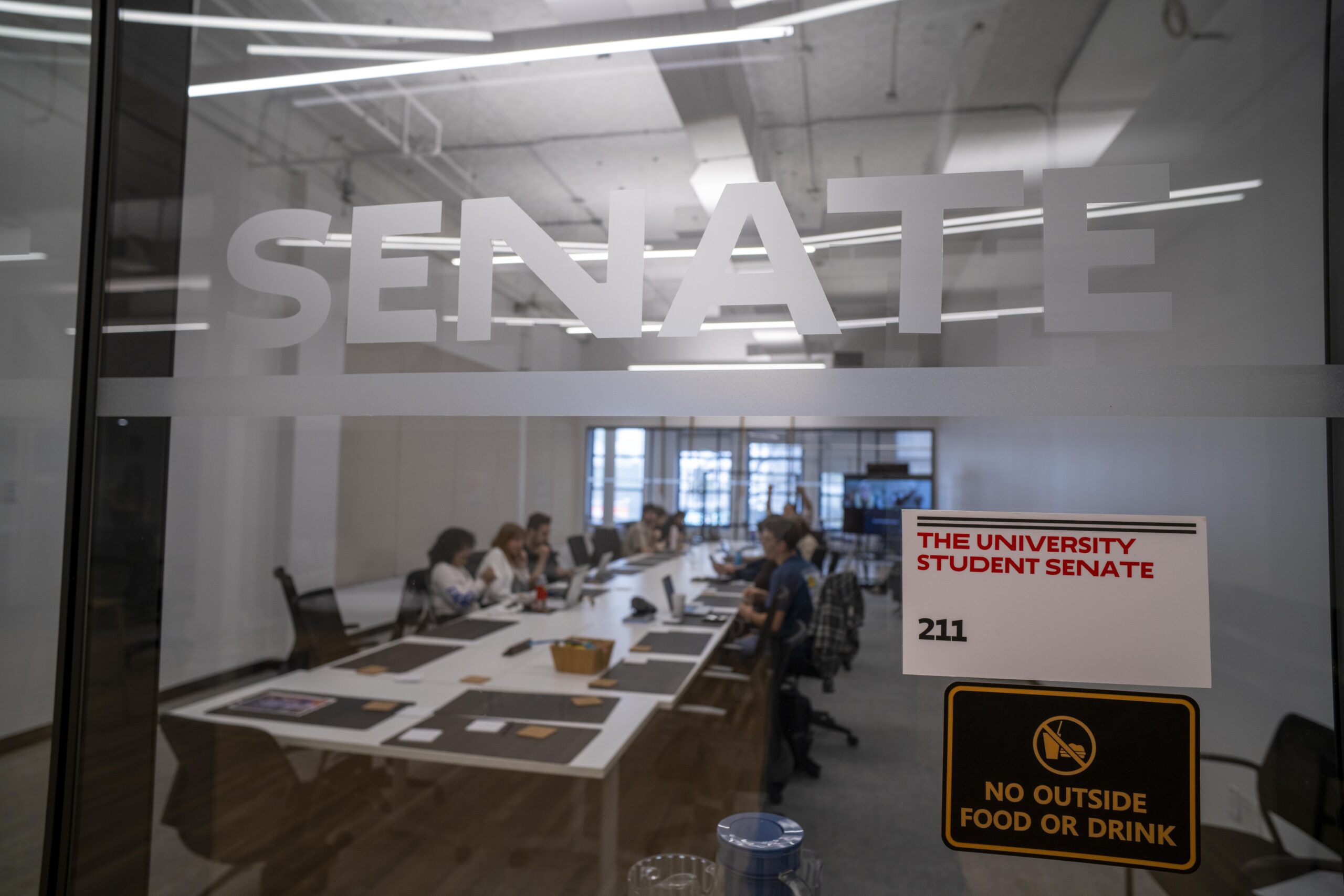Students of color demanded a dedicated space on campus during a forum held Friday, March 30, chastising university administrators for unsatisfactory answers at several points.
More than 130 students, faculty and staff gathered at 11 a.m. in Wollman Hall to discuss possible developments on campus, specifically a “master plan” for Lang. Dean Stephanie Browner, Vice President for Social Justice Maya Wiley and architect Rhoda Kennedy held the forum.
Attendees gave impassioned pleas for creating a space at The New School where students of color can come together in what student leaders described as a “place of refuge.”
In fall 2016, 28 percent of New York based degree-seeking students at The New School were people of color, according to data provided by the university. International students are considered a separate category—counted neither as white nor students of color.
“Providing students of color with a space in which they are not constantly infected by white supremacy provides a sense of community and support needed to continue to exist in such an institution,” said Talia Moore, a third year in Lang’s Journalism + Design program.

Leading up to the forum, a coalition of activist student groups, many of which represent students of color, published an open letter requesting Browner and administrators to provide “a dedicated space in the newly renovated Lang buildings.”
On March 26, students began circulating an online petition and the open letter. Within four days, the petition had garnered signatures from more than 900 students, staff and faculty, according to Hunter Stewart, a co-founder of Students of Color Weekly. Dean Browner also signed the petition.
“We use this time to call attention to the continued lack of support and effort into actualizing the Social Justice Hub’s capacity for student-based organizing and empowerment,” the letter read.
Students of Color Weekly meets regularly. The group’s founders, Stewart and Adriana Herrera Perhamus, said the space is inadequate.
“Students of color on this campus are constantly asked to be doing labor in the classroom, in any setting in the university,” said Herrera Perhamus, a senior studying culture and media at Lang.
“To come into a space and know that you’re not being asked anything, that you’re not being demanded anything, that it’s a space where you can relax or you can have fun, that’s not specifically about us doing any work, has been so crucial,” Herrera Perhamus added.
The weekly turnouts have ranged from 20 to 70 students, often crammed into the small rooms. “We’ll pack into a room like sardines just to be around each other,” Stewart said.
At the forum, other students reiterated Stewart and Herrera Perhamus’ assessments.
“The rooms are small, have inconsistent tech and allow for white students passing by to gaze into the fishbowl of student organizers trying to work,” said Nihira Ram, who represented the Autonomous South Asian Collective at the forum.
The hub has been a crucial organizing space for students, but has “descended into becoming additional studio space for Parsons fashion design students,” she added.
At the forum, Browner and Wiley shared their personal feelings surrounding the issue and passed the microphone to students to talk to them more directly.
“I am in support of this movement and we are working on it, and that will be inadequate today. Nothing I say today will be sufficient. You’ll have to judge us by our actions,” Browner said.
Wiley said she supported the students, but added that space planning at the university is a complicated process. “It’s a big institution and a big process, and as I said, I have seen decisions made for all the right intentions and create five more problems,” she said.
Student organizers, however, weren’t satisfied with every administrator response at the forum.
“We encompass queer people. We encompass BA/BFA students. We encompass low-income [students]. We are always going to be most at risk, so we need to have the confirmation that specifically students of color are the top of your priority. I don’t want to hear anything else,” Stewart said.

Out of 12 private liberal arts colleges in New York, six provide specific space and resources for students of color, according to a study by Jade Merriwether, a first year student and member of SOC Weekly and the Black Student Union.
Tracy Robin, assistant vice president for Student Health and Support Services, suggested repurposing certain spaces, specifically the faculty lounge on the seventh floor of the University Center. “Why do the faculty and staff need another space?” Robin asked.
After the forum, students gathered in the Social Justice Hub to debrief and talk about their feelings and next steps. Fifty more people then also signed the petition. As of April 5, the petition had reached 1,135 signatures.
In a email sent to supporters on Monday, April 2, Stewart and Herrera Perhamus congratulated the community for their work thus far and outlined the next steps. “We will keep this petition open until our demands are met,” they wrote.
“Student organizers have multiple meetings set up with various faculty and admin in the coming week, and will continue to provide updates as information becomes available to us,” the email said.
“We were aware it’s a very long conversation and that it wouldn’t be resolved in one meeting, one forum, even one semester, but we are encouraged by the amount of student support we have for the issue,” said Herrera Perhamus in an interview with The New School Free Press.
Although there were suggestions of space that could be repurposed or created, that was not the biggest outcome of the forum for Stewart.
“The biggest takeaway I’m keeping is the statements of explicit support from Dean Browner and Maya Wiley,” she said. “It’s not just about space, it’s about what’s attached to it.”
For information about Students of Color Weekly, contact Adriana Herrera Perhamus (adriana@newschool.edu) or Hunter Stewart (stewh731@newschool.edu).
Photos by Anna Del Savio







